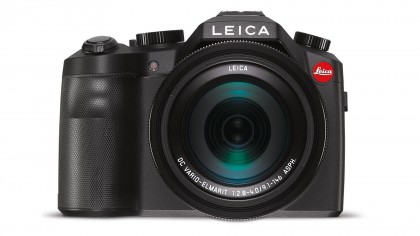TechRadar Verdict
Like its almost identical twin (the Panasonic FZ1000), the V-Lux Typ 114 has a very desirable lens and a good quality 1-inch sensor that produces high quality images in raw and JPEG format.
Pros
- +
1-inch sensor
- +
Large maximum aperture and 16x zoom range
- +
Extensive feature set
Cons
- -
Screen not touch sensitive
- -
Bulky for a 1-inch sensor camera
- -
More expensive than the Panasonic FZ1000
Why you can trust TechRadar
Leica and Panasonic have an interesting working relationship. Some Panasonic cameras have Leica lenses that are produced in Panasonic's factory following Leica quality control measures. And some Panasonic cameras are essentially rebadged as Leica models. The V-Lux (Typ 114), for example is Leica's version of the popular Panasonic FZ1000 and like the D-Lux (aka Panasonic LX100), it's produced in Panasonic's factory.
Both have been covered already along with all the other latest camera reviews and news in the Techradar Camera Channel home page.
The (Typ 114), by the way, distinguishes the V-Lux from its predecessor, which was called the V-Lux 4 (confusingly) but was based on an the older Panasonic FZ200 bridge camera which has a smaller sensor.
As usual there is a price premium to pay for the Leica badge, but the V-Lux comes with a 3-year warrantee from Leica and a copy of Lightroom 5 for organising and processing your images.
Like the FZ1000, the V-Lux (Typ 114) is a bridge camera with a 16x zoom range and a focal length equivalent to 25-400mm. Both cameras have a Leica DC Vario-Elmarit lens with a maximum aperture of f/2.8 at the widest point and f/4 at the narrowest.

Just like the FZ1000, the V-Lux is a direct competitor to the Sony RX10 which also has a (20.2Mp) 1-inch sensor, but the Sony's focal length range is restricted to the equivalent of 24-200mm, although the maximum aperture is a constant f/2.8 throughout the zoom range – the V-Lux's maximum aperture drops to f/4 at the equivalent of 175mm.
Inside the body is a 1-inch sensor (significantly larger than the 1/2.3-inch devices in most models), with 20.1 million pixels. The bigger sensor means larger photo-receptors, to allow more light to be captured and improve noise control, dynamic range and image quality as a whole.
Sign up for breaking news, reviews, opinion, top tech deals, and more.
Leica doesn't actually mention the V-Lux's processing engine, but it's a safe bet that it's the same Venus Engine as is found in the Panasonic FZ1000. This allows the native sensitivity to be set in the range ISO 80-12,500 with an expansion setting of ISO 25,000 – that's slightly different from the FZ1000 which tops out at ISO 12,800.The maximum continuous shooting speed is 12 frames per second.
There are exposure modes to suit enthusiasts (program, aperture priority, shutter priority and manual) along with a fully automatic mode and scene modes to help less experienced photographers. The V-Lux also has a mode that gives access to the same 22 filter effects available on the FZ1000. These effects are applied to JPEG files, but they can be used when shooting raw files simultaneously so that a clean file is available for processing.
The FZ1000 was the first bridge camera capable of 4K (3840 x 2160 pixel) video recording at up to 25fps (PAL) in MP4 format, and the V-Lux follows suit. While this may not impress some stills photographers, the fact that it's possible to extract 8Mp still images form 4K video may.
It's also possible to record video at Full HD and VGA resolution, but the V-Lux only allows MP4 recording while the FZ1000 can record in MP4 or AVCHD. The FZ1000's ability to record Full HD footage at 100fps is also absent in the V-Lux.
Like the FZ1000, the V-Lux has a collection of AF point selection options including, 49-Area, 1-Area AF, Pinpoint AF, Face Detection AF and the Custom Multi AF mode first seen in the GH4 that allows the user to select blocks, rows or columns of AF points for use. It's also possible to focus manually and Focus Peaking is available to show the areas of highest contrast (focus) – this is especially useful during video recording.
There is also a Zebra display for highlighting areas close to burning out. This can be set to indicate a brightness value of 50-105%.

Naturally, as it's a bridge camera, the V-Lux's viewfinder is electronic rather than optical. This is a 2,359,000-dot OLED device, and there's a vari-angle 3-inch 921,000-dot LCD. As on the FZ1000, this screen is not touch-sensitive.
The V-Lux has Wi-Fi and NFC connectivity built-in for connecting to smartphones and tablets. In addition, Leica offers a free app (Image Shuttle) which enables the camera to be controlled remotely and images transferred wirelessly.
An intervalometer for time lapse recording, multiple exposure mode and a built-in flash, along with a hot-shoe for attaching an external flashgun, top-off the V-Lux's specification nicely.
